Side Archaeological Museum in Antalya: Entrance Fee & Travel Tips
Side, one of the most popular holiday resorts of Antalya, is a destination that stands out not only with its magnificent beaches and natural beauties, but also with its ancient history. The Side Archaeological Museum is a unique cultural stop that carries the most valuable pieces of this historical heritage to the present day. If you want to crown your holiday with cultural riches, the Side Archaeological Museum is one of the must-see places. In this guide, you will find every detail from the history of the museum to the exhibited artefacts, from transport information to entrance fees.
Image Source: Türkiye Kültür Portalı
History of the Side Archaeological Museum
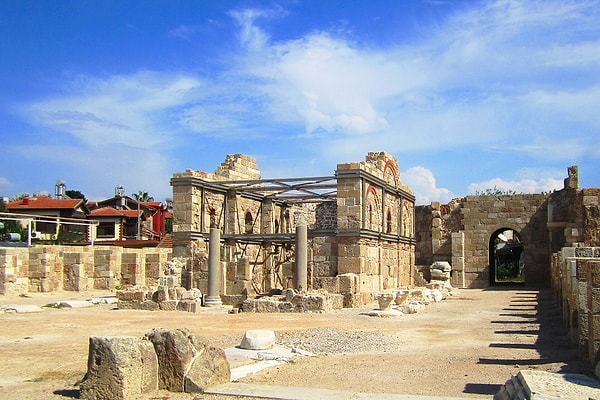
The Side Archaeological Museum was opened to visitors in the 1960s after the restoration of the ancient Roman Baths. The museum building itself is a historical artefact in itself; This Roman bath, dating from the 2nd century AD, perfectly reflects the architectural features of the period. In this respect, it is the first ancient building to be used as a museum in Turkey.
Artefacts in the Side Archaeological Museum
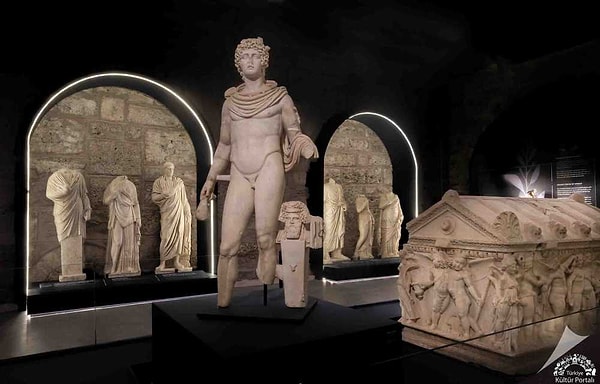
The museum houses hundreds of artefacts excavated in the ancient city of Side. Among these artefacts are very valuable archaeological finds from the Roman, Hellenistic and Byzantine periods. Especially statues, sarcophagi, inscriptions and reliefs are quite remarkable.
Among the most remarkable artefacts are the following:
Nike (Goddess of Victory) Statue: Nike, the goddess of victory in Greek mythology, draws visitors into history.
Apollo and Heracles Statues: The aesthetic detail of these statues, reflecting the ancient Greek gods, is fascinating.
Roman Period Sarcophagi: These artefacts, where marble workmanship has reached its peak, reveal the traditions of burying the dead.
Mosaics: Especially the mosaics decorated with geometric patterns and mythological scenes are remarkable.
Inscriptions and Inscriptions: They provide important clues about the social, religious and political life of the period.
The Importance of the Side Archaeological Museum
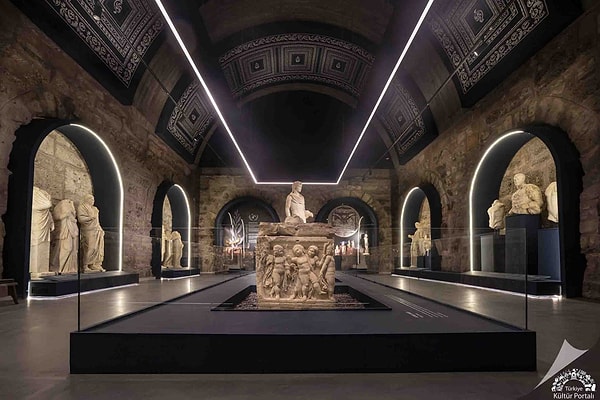
Side Archaeological Museum is of great importance not only in terms of local history, but also in terms of having information about Anatolian civilisations and especially the Pamphylia region. The artefacts that shed light on the trade, culture and religious life of ancient Side are exhibited chronologically and thematically in the museum. This offers visitors an impressive and instructive experience.
Where is the Side Archaeological Museum?
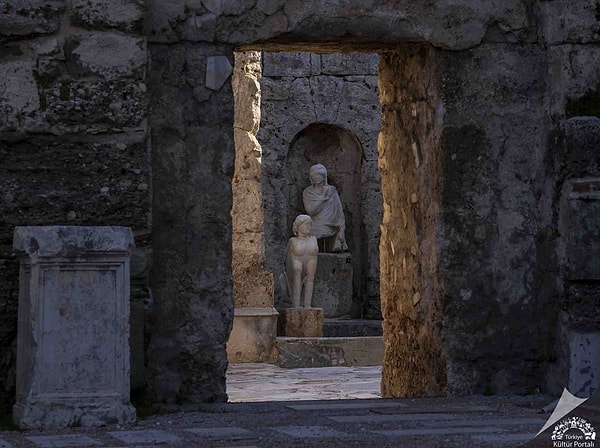
Side Archaeology Museum is located within the borders of the Side Neighbourhood of Manavgat district of Antalya, just opposite the Side Ancient Theatre. Since it is located at a very central point, it is very easy to reach the museum.
Transportation Options:
By Private Car: It is approximately 75 km from Antalya city centre and can be reached by a 1-hour journey on the D400 highway.
Public Transport: You can reach the museum in 20 minutes by taking Side minibuses from Manavgat bus station.
By Tours: The vast majority of cultural tours organised in Side and its surroundings include the museum in the visit programme.
Entrance Fees to the Side Archeological Museum
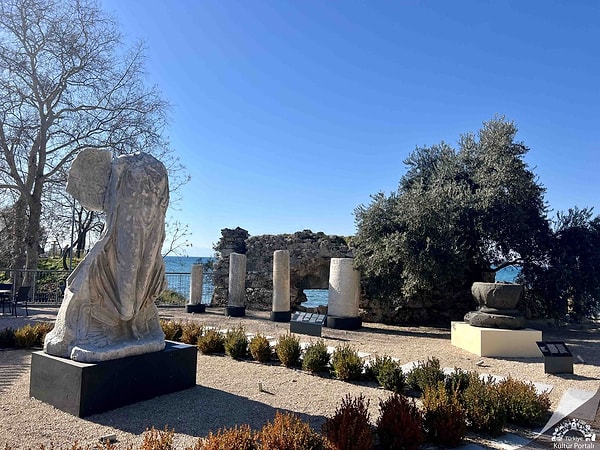
Foreign visitors: 5 Euros
The MuseumPass is valid. Museum Card+ holders can also enter without additional charge.
Free for some groups, such as under 18, over 65 and teachers (valid for Turkish citizens).
Note: Entrance fees may be updated several times a year by the Ministry of Culture and Tourism.
Visiting Hours to the Side Archaeological Museum
The museum is open 12 months of the year. Opening and closing hours may vary according to the summer and winter seasons.
Working Hours: 08.30 - 21.00
It is also open to visitors on Mondays.
Other Places to Visit Close to the Side Archeological Museum
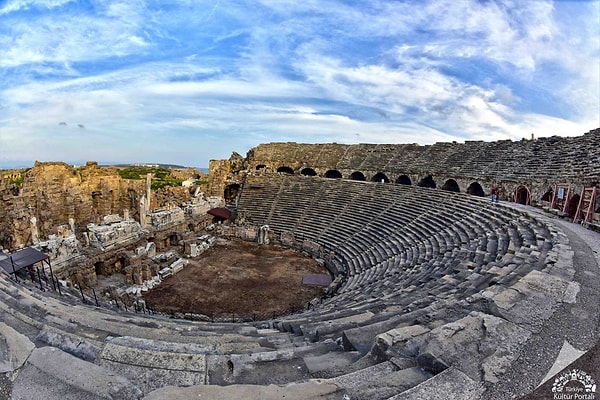
After visiting the museum, you can visit many historical and tourist locations. Especially
Side Ancient Theatre: Located just opposite the museum, this theatre is one of the largest of the Roman period.
Temples of Apollo and Athena: Famous for their sunset view, these temples offer a unique opportunity for photography enthusiasts.
Side Harbour: This area, which was used as a trade harbour in ancient times, is now surrounded by restaurants and cafes.
Side Amphitheatre and Agora: These structures, which provide information about city planning and commercial life, allow you to understand the social structure of Side.
Manavgat Waterfall: It is an ideal escape for those who want to be alone with nature after a museum visit.
Interesting Facts and Little-Known Facts About the Side Archaeological Museum
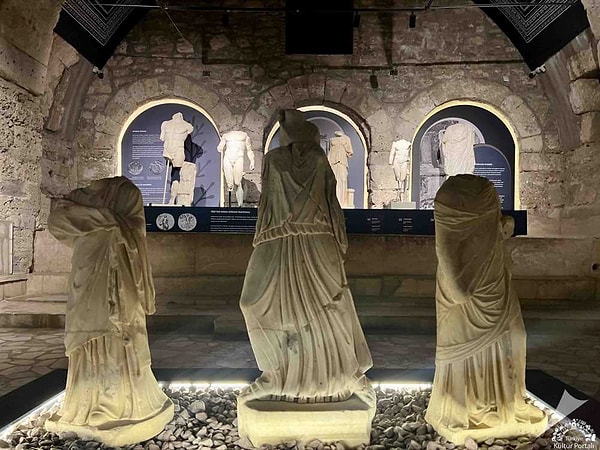
The Side Archaeological Museum is quite remarkable not only with its exhibits but also with its structural features. Here are some little-known but impressive details that make the museum more special:
Side Archaeological Museum, which has the distinction of being the first ancient building converted into a museum in Turkey, is housed in a Roman Bath from the 2nd century.
The bath structure consisted of hot (caldarium), warm (tepidarium) and cold (frigidarium) rooms in ancient times. These sections are still preserved in their original form.
Many statues and sarcophagi exhibited in the museum were actually unearthed as a result of years of excavations in different structures of the ancient city of Side (such as the theatre and agora).
Some inscriptions in the museum provide important information about the social life of women in ancient Side and their role in commercial activities.
The columns and marble architectural pieces in the museum garden give visitors the opportunity to feel the history by strolling in the open air.
Keşfet ile ziyaret ettiğin tüm kategorileri tek akışta gör!

Send Comment